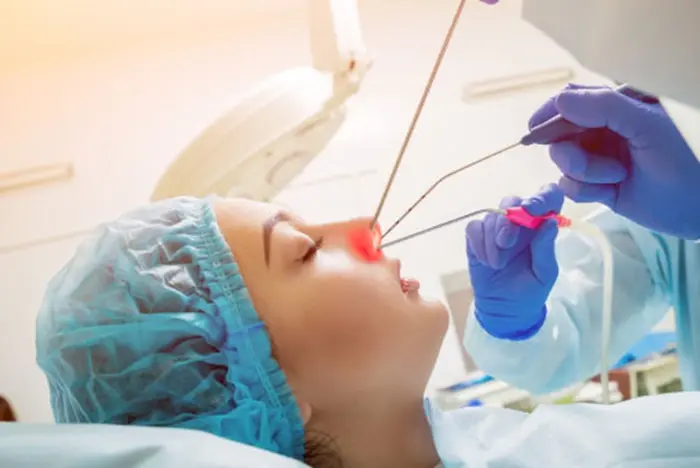Rhinoplasty, commonly known as a nose job, is a popular cosmetic surgery procedure aimed at reshaping or resizing the nose. While it can significantly enhance facial harmony and boost self-confidence, the recovery process is crucial to achieving optimal results. One common question patients have is whether they can resume their exercise routines after rhinoplasty. This article provides a comprehensive, professional, and objective overview of the considerations and guidelines for exercising post-rhinoplasty.
Understanding Rhinoplasty Recovery
Initial Recovery Phase
The initial recovery phase of rhinoplasty is critical. During this time, the body focuses on healing the surgical site. The first few days post-surgery involve significant swelling, bruising, and discomfort. It is essential to follow the surgeon’s instructions meticulously to ensure proper healing.
Healing Milestones
Rhinoplasty recovery can be divided into several milestones:
First Week: During the first week, the nose is highly sensitive, and activities should be limited to avoid any trauma or increased blood flow to the area.
Weeks 2-4: Swelling begins to subside, and patients may feel more comfortable. However, the nose is still healing internally.
Months 1-3: Most of the visible swelling has resolved, but internal healing continues. Patients may gradually resume some activities.
Months 6-12: Complete healing, including internal tissue remodeling, occurs. Final results become more apparent.
The Importance of Rest
Initial Rest Period
Rest is crucial during the initial recovery period. Avoiding physical exertion helps minimize swelling, reduce the risk of bleeding, and promote proper healing. Resting with the head elevated can also aid in reducing swelling and discomfort.
Psychological Benefits
Resting and taking time off from exercise can also have psychological benefits. It allows patients to focus on their recovery and adapt to their new appearance without the added stress of physical activity.
See Also: How Much Does A Nose Reduction Surgery Cost?
Risks of Exercising Too Soon
Increased Swelling and Bruising
Exercising too soon after rhinoplasty can lead to increased blood flow to the face, which may exacerbate swelling and bruising. This can prolong the recovery process and potentially affect the final results.
Risk of Injury
Engaging in physical activities prematurely can increase the risk of accidental injury to the nose. Even minor trauma can disrupt the healing process and necessitate additional surgical intervention.
Impact on Surgical Outcomes
Excessive movement and strain can impact the surgical outcomes of rhinoplasty. The delicate structures of the nose need time to settle and heal in their new position. Exercise-induced strain can compromise the surgical adjustments made during the procedure.
Guidelines for Resuming Exercise
Consulting with Your Surgeon
Before resuming any form of exercise, it is imperative to consult with your surgeon. Every patient’s recovery is unique, and your surgeon can provide personalized recommendations based on your specific case.
Gradual Introduction of Activities
When your surgeon gives the green light to resume exercise, it is essential to do so gradually. Starting with low-impact activities and slowly progressing to more intense exercises can help ensure a safe and smooth transition.
Low-Impact Activities
Walking: Walking is a low-impact activity that can be resumed relatively early in the recovery process. It promotes circulation without putting undue strain on the nose.
Stretching: Gentle stretching exercises can help maintain flexibility and prevent stiffness without causing harm to the healing nose.
Light Yoga: Light yoga, focusing on gentle poses and avoiding inversions, can be a safe way to reintroduce physical activity.
Avoiding High-Impact Activities
High-impact activities should be avoided for a more extended period. These activities include:
Running: Running can cause jarring movements that may negatively affect the healing nose.
Weightlifting: Heavy lifting and straining can increase blood pressure and stress the nasal structures.
Contact Sports: Sports that involve physical contact or the risk of facial injury should be avoided until the nose is fully healed.
Monitoring Your Body
Listening to your body is crucial when resuming exercise after rhinoplasty. If you experience pain, increased swelling, or discomfort, it is essential to stop the activity and consult your surgeon.
Special Considerations for Athletes
Professional Athletes
Professional athletes or individuals with rigorous training schedules may need to take additional precautions. It is essential to have a detailed discussion with the surgeon about the timeline for returning to competitive training and any modifications that may be necessary.
Personalized Exercise Plans
Developing a personalized exercise plan in collaboration with the surgeon and a fitness expert can help athletes maintain their conditioning while ensuring a safe recovery.
Long-Term Benefits of Gradual Resumption
Optimal Healing
Gradually resuming exercise allows the body to heal optimally. It minimizes the risk of complications and ensures that the surgical results are not compromised by premature physical activity.
Sustainable Fitness Routine
Adopting a gradual approach to resuming exercise can also promote a sustainable fitness routine. It helps patients ease back into their activities without overwhelming their bodies, reducing the risk of burnout or injury.
Psychological Well-Being
Maintaining a balanced approach to exercise and recovery can positively impact psychological well-being. It allows patients to enjoy the benefits of physical activity without the added stress of potential complications.
Conclusion
Exercising after rhinoplasty requires careful consideration and adherence to the surgeon’s guidelines. The initial recovery phase is critical, and rest is essential to promote proper healing. Gradually reintroducing low-impact activities while avoiding high-impact exercises can help ensure a safe and smooth recovery. Consulting with your surgeon and listening to your body are key to achieving optimal surgical outcomes and maintaining overall well-being. By taking a thoughtful and measured approach to exercise, patients can enjoy the benefits of their rhinoplasty results while maintaining their fitness and health.
Related topics:

